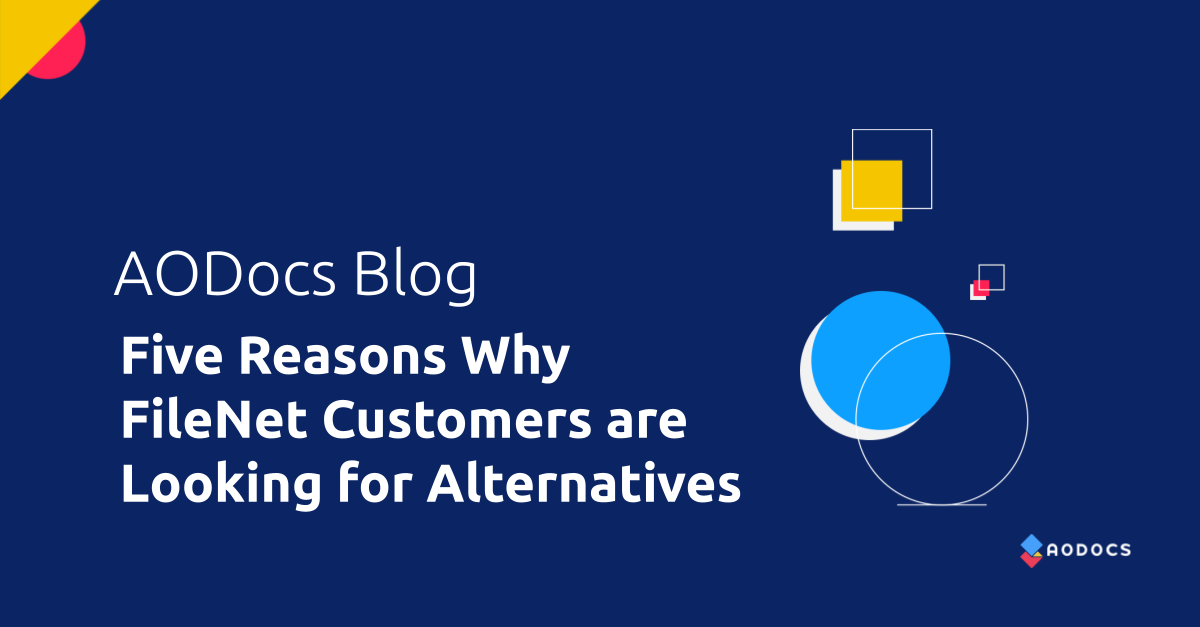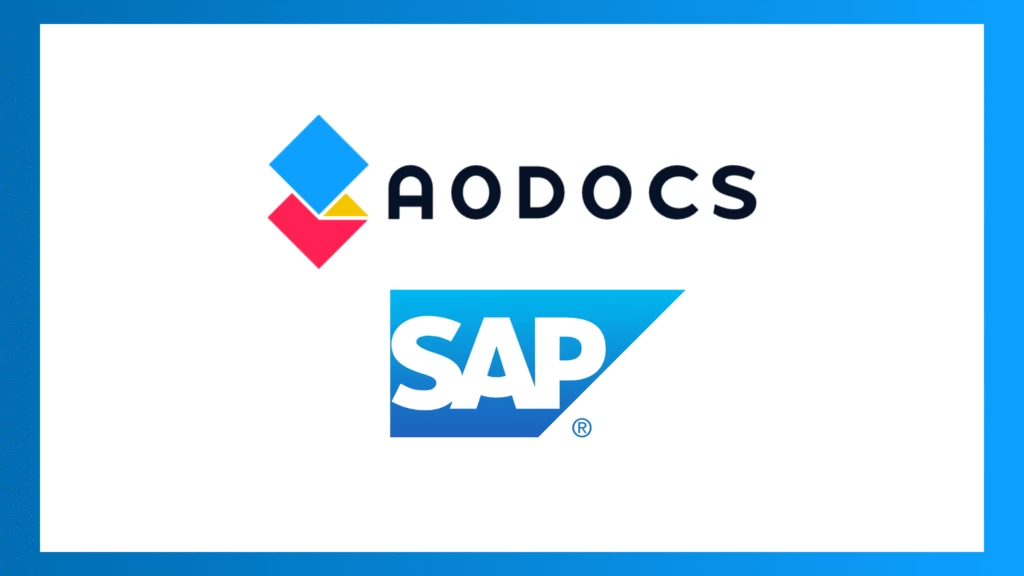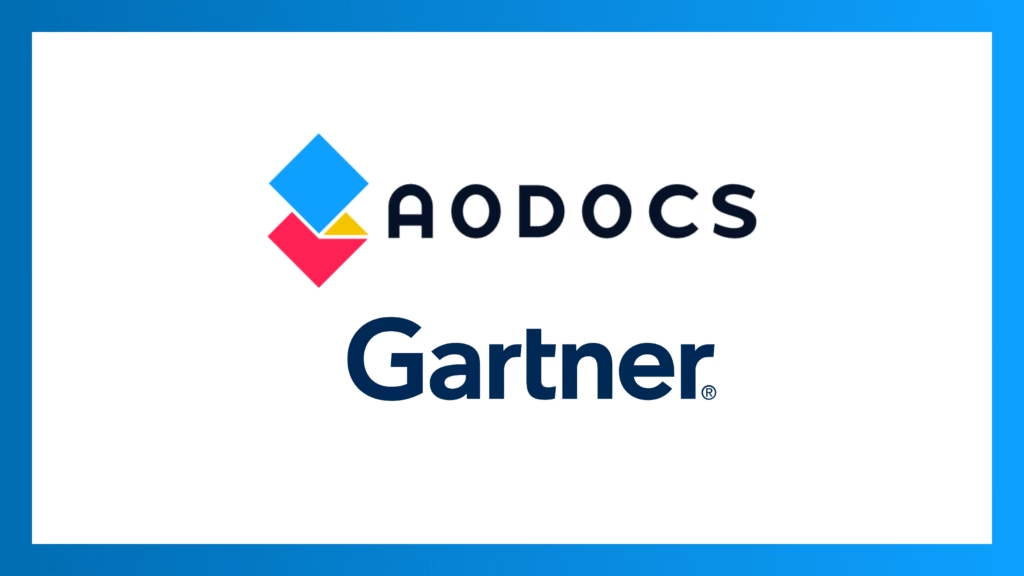IBM has been in the document management (DMS) / enterprise content management (ECM) game for quite awhile, and for a period of time, FileNet was a mainstay for large enterprises operating in highly-regulated industries such as financial services and the public sector.
But things are different today.
FileNet customers often share their concerns with us about the future of FileNet, and its ability (or inability) to allow them to adapt to quickly changing business needs. They’re often unsatisfied with the complexity of initial deployment and ongoing administration, as well as the high total cost of ownership (TCO). This is why we’re seeing more and more organizations migrate from FileNet to AODocs.
If you’re a FileNet customer who is feeling the pain in any of the five areas below, then it’s time to make the move ASAP:
1. Running on an outdated and unsupported FileNet version
If your organization is not using the latest version of FileNet (5.5), then your software is no longer supported by IBM. This means that you are taking a risk of disruption to your business if something breaks, which happens all of the time with highly-customized legacy software. It then becomes increasingly difficult (and expensive) to get it fixed.
But perhaps an even greater risk are the security vulnerabilities that can be exposed in old FileNet deployments. At a time where instances of ransomware are becoming a more serious and pervasive threat, this should be a huge concern for legacy FileNet customers.
2. FileNet is complex and expensive to own and administer
FileNet’s reputation for expensive software solutions and professional services is well-known, and well-earned. Their focus is on providing customized solutions for large enterprises that typically require customers to also buy expensive IBM hardware, software, and services.
Legacy ECM systems like FileNet are complex, cumbersome, and require significant IT resources to configure, deploy, and maintain — and these “hidden costs“ are often overlooked when evaluating the TCO. Oftentimes, users must involve the IT team to set-up access privileges, workflows, and other processes that they should be able to administer themselves, which places greater demands on the already overburdened IT staff.
In our recent conversations with industry analysts, we’ve asked which ECM solution is the most frequently cited by their clients as the one they want to move away from, and FileNet is always mentioned at or near the top. Complexity to administer and its high total cost of ownership are driving more and more FileNet customers to consider other alternatives (such as AODocs).
AODocs has enabled numerous enterprises to substantially reduce their TCO after migrating away from FileNet and other legacy ECM, because we’re a much more cost effective solution, it’s much easier to administer, and our low-code platform allows users to quickly build new business applications and create new possibilities that exceed their requirements.
3. Struggling with content fragmentation
Over the years, many FileNet customers have accumulated multiple document repositories, and often added them on top of it other IBM content products such as Content Manager on Demand (CMOD). Massive amounts of structured data and unstructured content often reside within these multiple and disconnected information silos, creating compliance and security risks and preventing employees from accessing the information they need to perform their jobs.
AODocs eliminates content fragmentation and enables enterprises to more effectively organize, manage, secure and share their information, which leads to better decisions, faster results, improved collaboration and the highest levels of security and compliance.
4. Lack of product innovation
Customers have only seen very minor software updates since the last major version of FileNet was released more than four years ago (5.5 in 2017). In the modern cloud era, this is an eternity.
On top of its “few and far between” product release cadence, IBM has been unfashionably late to the cloud party, and many say they are failing to meet customer demand for content collaboration and SaaS deployment models. Once a “leader” in many prominent industry analyst vendor ranking reports, FileNet has seen its position drop steadily in these evaluations during recent years.
5. FileNet UX is…well…let’s say not ideal
News flash — modern workers want modern tools that are easy to use.
From an end-user perspective, FileNet is complex and even simple operations like opening a document or searching for a keyword feel like a burden. This is why FileNet suffers from poor user adoption.
Legacy FileNet environments tend to lock valuable data and content within them — in repositories that can only be accessed by a limited number of users, through arcane and antiquated interfaces. If access is restricted due to limited user licenses, difficult to use interfaces, outdated technologies, or too many disparate systems — the value of this information is significantly decreased.
With AODocs, users can store, view, edit, and interact with data and content in a manner in which they’re already accustomed to. This changes the dynamic of how employees interact with information and results in substantially higher user adoption rates.
Replace FileNet Now!
Chances are if your organization is still using FileNet, you’re struggling with more than one of the above mentioned issues. Migrating from FileNet to the AODocs content services platform can deliver both short term ROI and longer term reduced TCO, and lay the foundation for further digital transformation efforts.
AODocs provides a vastly superior FileNet alternative. Old monolithic DMS and ECM systems, like FileNet, lack the modern tools and cloud-native capabilities that today’s enterprises demand. Contact us today to learn more!



